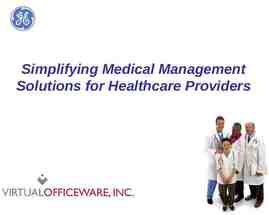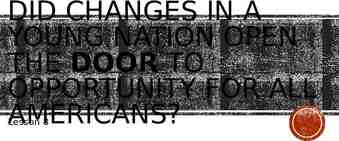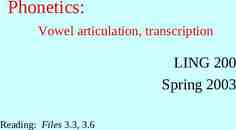Module 2 Business Planning Basics Amy Shapiro
35 Slides3.75 MB
Module 2 Business Planning Basics Amy Shapiro
Recap from Week 1 Converting assumptions into numbers, measuring activities, managing time Evaluating client’s skill level, learning style, abilities Understanding external factors: Clarity on what we know, don’t know and where to refer
What does your client know? Indicators Information and assumptions effect choices. How did you know? the best price? target market? Indicators: Increased wages 11- 15 Square & POS Systems Millennials -Baby boomers Health insurance costs Local construction (bridge) Adaptation by A. Shapiro
Strategic Questions How did you get to this point? Where do you want to be in 3-5 years? Describe your family/friend support? Where do you get information from? What is your learning style? Do you have a retirement plan? Will? What is easy and what is hard? What are your strengths and gaps?
Obstacles that small businesses confront & How to overcome obstacles. What is impact,%, assumptions? Personal Lack of credit history Limit of personal assets impact when starting, financing, growing Business High cost of goods Lack of customers Lack of business experience client’s cooking a great restaurant? Lack of industry knowledge Lack of cash Lack of qualified employees Lack of time to start and growinformation ? Usechallenges data to discuss (worksheets, documents, 1-1 Lack of efficiency meetings) to review obstacles with a client. Lack of network/connections and understanding of the
Table of Contents Module 2 Learning Objective Overview of a Business Plan (M2:1) Overview of Business Planning (M2:2) Business Plan Outline (M2:3) Supporting Documents (M2:4) TA provider role in business planning (M2:5) Case Study (M2:6) Assessing Personal Financial Needs (M2:7) Leading Questions to help clients develop their ideas (M2:8) Requirements (M2:9) The Experiment – Test your Idea (M2:10) Mission Statement (M2:11) Price Quality Relationship (M2:12) SWOT Analysis (M2:13) Sales and Marketing: Features, Benefits and Customers (M2:14) Marketing Strategies (M2:15) Operating Controls (M2:16) Considerations (M2: 17) Credit Score (M2:18) Financial Strategy (M2:19) Income, Balance, Sources & Uses Financial Statements (M2:20) GOALS: List measurable objectives (2 slides) (M2:21 & 22) Loan Application Check List (M2:23) C’s of Lending (M2:24) Action Steps (M2:25) SBA Tools (M2:26) Tools: Calculate startup costs (M2:27) Lender Match (M2:28) Experiential Learning Project (M2:29)
Learning Objective Identify requirements to start a small business – Realistic plan, Personal expenses covered, financing, good timing and measurements to evaluate Calculate startup and operational assumptions – Ask questions – convert to numbers: Sell 5 20 each 100 – 3 labor hours 12.75 13% (1.66) 14.41 x 3 43.22 – Utilities set-up fees? Understand the key components of a good business plan. – Realistic, backed up with data, includes all the elements Explain the components of a balance sheet and income statement – General (more depth in next session) M2:1
Overview of a Business Plan Living analytical document for internal planning to make decisions Who needs to write a business plan? : Owner (w/assistance) When to write one, how long it should be? – Early, expansion, financing - depends What can a business plan do and what it cannot do? – Organize thoughts, road map - not a sure bet the business will succeed What are the risks of writing a business plan? Plan is not followed Describe your approach to develop a business and financial plan. – Do your clients understand the importance of a plan? And why needed? – What works and what doesn’t work? – Ways to enhance getting business plan completed. – Identify what blocks clients from the work, demystify the process – Help them get started and give them bite size pieces of homework (data to collect) M2:2
Business Plan Outline Executive Summary Business Description & Goals Background Information The Marketing Plan Operating Controls Legal Identity The Financial Plan Environmental Sustainability Feasibility Action Statement Supporting Documents M2:3
Supporting Documents Resumes of key people Personal Financial Statements Photographs and pricing of product, equipment Samples of marketing materials, menu, signage Market survey results Business certificate Corporate legal papers Insurance Lease contract or letter of intend to lease from landlord. If financing will need lease before loan closing. Estimates (if apply) for build out including plumbing, electrical, and estimates for all costs associated to improving or building the commercial space M2:4
TA provider role in business planning Ask strategic questions Listen and observe non verbal behavior Evaluate if answers make sense (ask clarifying questions) Determine if there is enough back up information Identify gaps in strategy Sharing information Collecting data Organizing information Write or improve the business plan with business client collaboration Use business plan for the purpose of obtaining financing or as a strategy for the business to grow. Identify the client’s problem and solution M2:5
Case Study: Rosab Academy LLC Math & Reading Center in Wakefield Business Owner: Latha Uthayakumar, Instructor/Center Director Location: 382 Main Street, Wakefield, MA 01880 Facebook: KumonMathReadingCenterWakefield Email: wakefield [email protected] Phone: 781-245-6284 Discovery of Business Business Plan Preparation for Financing M2:6
Assessing Personal Financial Needs How personal expenses impact business strategies and gives TA provider insight to realistic needs 2.25 2 2 2 2 1.25 1 0.05 Year 1 Year 2 Personal Year 3 Year 4 Business M2:7
Leading Questions To Develop Ideas Lean Canvas Problem Solution Unique Value Prop. Does my idea solve How does the idea What value the idea a problem? solve the problem? provides to consumers? Do people need it? What are the key How that value is features of the unique & different? solution? Do people want it? Existing Alternatives Competitors are the Competitors? Key Metrics High-Level Concept Sales, clicks, inquires, Total attendees Mission Cost Structure What are the most important costs? ( Labor, Space, Legal, Insurance, COGS ) Which key resources are most expensive? Unfair Advantage Customer Segments What does idea possess that others do not? What is the market for this idea? How many people populate that market? Who populates this market? Which segments to target ? How that market is segmented? Channels Early Adopters Social media Who are the first to platforms buy? Traditional advertising Revenue Streams What value are customers willing to pay? What do they currently pay? (Sales,Commissions, Hourly billing) M2:8
Requirements Licenses Federal, State, Municipal Division of Professional Licensure Business License Register with city/town to receive a business certificate (will need to be used to open business bank account) State & Federal Certifications Tax ID Numbers or EIN Numbers IRS Form SS-4 (www.irs.gov) MA Tax Connect (www.dor.state.ma.us) Social Security Number Permitting Occupancy Board of Health Transportation Contracting Childcare (www.qualitychildcare.org) Secretary of State Check if business name is already in use. www.sec.state.ma.us
The Experiment – Test Idea Test the solution Do people care Industry Overview: Ibis & Mintel report Research: Boston Public Library – A-Z electronic database Survey Focus groups Pivot or proceed The importance of guiding clients towards gathering information outside of their intuition and knowledge. M2:1 0
Mission Statement Mission Statement that guides your work. General Description of the Business A few sentences describing purpose, who you are, what you do, what’s important, and why you do it. 30 second elevator pitch Focusing Tool All decisions fall underneath mission Gives client something to say ASAP as they network M2:11
Price Quality Relationship Identifying the choices clients have when entering a market PRICE Q QQ QQQ QUALITY Promotional strategies Packaging plan including business cards, flyers, advertisements, and labels. M2:12
SWOT Analysis: Identifying strategies Strengths Opportunities Weaknesses Threats M2:13
Sales and Marketing: Features, Benefits and Customers Describe the products or services by – – – – Features: tangible Benefits to the customer: intangible Seasonality: fluctuations Growth potential: expansion (sales/items) Provide analysis of the market by describing – Customer’s demographics – Competitor’s strengths and weaknesses, – Market potential within the current trade area including target market size and trends. M2:14
Marketing Goals, Strategies, Tactics Clarify Goals: What you want to happen Identify Strategies: General plan of action Determine Tactics: Specific techniques and tools Branding Social Media Networking Print Media Collaborations Radio Sponsorships Collaborations Print Materials When not familiar with topics make a referral. M2:15
Operating Controls Process Mapping: A visual display the flow of a process – Lean Manufacturing Principles https://youtu.be/wfsRAZUnonI – https://youtu.be/CJSZj9bShAI. Lean process Improvement - funny – Exercise: Coffee Shop – Exercise: Hiring process Procedures: Cash Management – Daily process: tracking & reporting income & expenses Internal management procedures related to: – – – – – – Day to day operations Purchasing Inventory control Customer service Pricing Quality control Identifying environmental costs & business impact M2:16
Considerations Insurance: Mandatory: Workers Comp, Auto, Health (options 10 employees), Essential: Liability, Fire, Product Liability Desirable: Health, Crime, Business Interruption, Key Person, Bonding Protect Ideas: Patents, Trademarks, Copyrights Taxes: www.irs.gov & www.dor.state.ma.us Self Employment Tax Federal Income Tax. Federal Withholding(FICA) Sales & Use Tax (Meals Tax State Income Tax Federal Unemployment (FUTA) M2:17
Credit Score “Good Credit Score 650 “ –Manage revolving accounts –Make payments on time –Check accuracy of reports M2:18
Financial Strategy Assumptions Create a cost of goods (COGS) analysis Identify Fixed & Variable Expenses Determine Profit or Loss goals Develop financial statements and projections -Develop startup statement and uses and sources statement COGS Product Cost Chartknow your industry Fixed & Variable Expenses Profit M2:19
Income, Balance, Sources & Uses Financial Statements Income Statement – financial picture for a period of time – Revenue, COGS, Expenses Balance Sheet - a snap shot in time – Assets Liabilities Equity Sources and Uses – funds needed & used for financing – Sources of Cash Uses of Cash M2:20
GOALS: List measurable objectives SHORT TERM GOAL 1: Streams of Revenue: Sales within 1-2 yrs Product Service OBJECTIVE A: Retail sales OBJECTIVE B: Wholesale sales OBJECTIVE C: Website sales Counseling hours income Workshops participants tuition Consulting clients income SHORT TERM GOAL 2: Marketing strategy to reach customers OBJECTIVE A: Advertising that increases customer inquiries by 20% OBJECTIVE B: Social networking/ Networking that converts customer inquiry by 20% OBJECTIVE C: Market Survey to obtain feedback from # of respondents M2:21
GOALS: List measurable objectives SHORT TERM GOAL 3: Operation strategy to reduce waste 10% OBJECTIVE A: Administration that increases efficiencies OBJECTIVE B: Production that decreases costs and waste OBJECTIVE C: Sales that decreases customer acquisition expense SHORT TERM GOAL 4: Financial strategy to have 20% net profit OBJECTIVE A: Maintain weekly financial records and review weekly OBJECTIVE B: Stay current with all taxes and loans (meals, payroll, sales) OBJECTIVE C: Monthly update of Product Cost Chart M2:22
Loan Application Check List Completed Loan Application Form Completed Business Plan with description of the purpose & activity & social/community benefit Two Year Cash Flow Projection by month with Assumptions Inception Balance Sheet Copy of Lease (rented properties only) Schedule of Sources and uses of funds to support project & owners equity Returns including all supporting statements and schedules Property and/or Equipment Appraisals (if available) Marketing Materials (logo, menu) Itemized list of existing business loans, lines of credit owed & balances owed and Written quotes on equipment finance purchase requests (install price where applicable) Building Trade Quotes from licensed professionals (applicable for loan requests funding lease hold and/or construction improvements) – Please itemize Signed Purchase and Sale Agreement Personal Financial Statement (disclose all debts including total & monthly payment schedule) Past Three Years Personal Income Taxes and Business Tax Resume of Owner and Key Managers/Employees Customer references M2:23 Bank Rejection Letter (where applicable)
C’s of Lending Criteria used by lenders Credit History: What is the credit score of owner? Character: Does the owner have ability to manage? Collateral: What assets can guarantee the loan? Conditions: What is the long term & condition for the loan? Capital: What equity is available? Cash: How is the business cash flow to repay the loan? Concept: What is the concept & how is concept considered for financing? Ex: Contractors, restaurant & liquor stores (license process with community involvement, high turnaround health regulations), salon & barber shops, money transfer and check cashing stores (regulated by the state and treasury department), etc. M2:24
Action Steps Describe and prioritize the actions needed to move forward to implement the plan. To do list Who is responsible Get certified Me Complete plan Me Talk with CPA Research Me Me Completed M2:25
Small Business Administration Tools Build Your Business Plan: https://www.sba.gov/tools/business-plan/1 SCORE Business Plan Template for a Startup Business: https://www.score.org/resource/business-plan-template-startup-business SCORE Business Plan Template for an Established Business: https://www.score.org/resource/business-plan-template-established-business M2:26
Tools: Calculate startup costs This is a free fillable PDF spreadsheet to calculate your small business startup costs from the Small Business Administration https://www.sba.gov/sites/default/files/2017-07/Startup%20Costs%20Worksheet .pdf SCORE Personal Financial Statement: This is a free template that will help you assist clients with setting up their personal financial statement and allows for the breakdown of total assets and liabilities. https://www.score.org/resource/personal-financial-statement-template M2:27
Lender Match This is a free online referral tool that connects small businesses with participating SBA-approved lenders. https://www.sba.gov/funding-programs/loans/lendermatch
Experiential Learning Project From a case study, develop a feasibility proposal for obtaining financing.








































